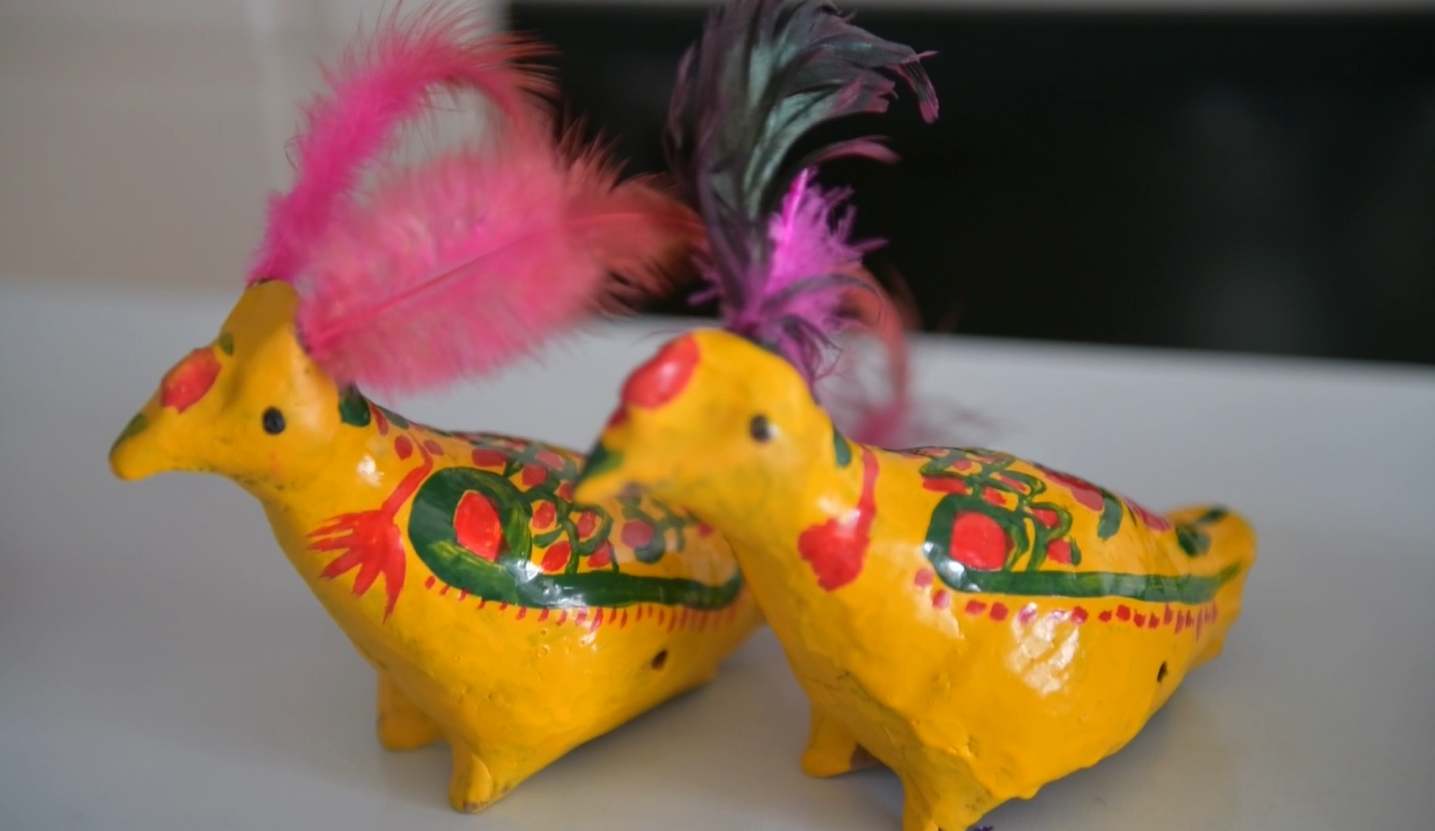BEIJING, May 17 (Xinhua) -- In Yimeng area of east China-situated Shandong Province, colorful clay whistles, which used to be the most popular toys for local children, are regaining attention as a typical embodiment of local folk culture.
Cherished in memory of many local people, traditional Yimeng clay whistles had simple and exaggerated style, ingenious appearance and bright color and were worn around necks of children with colorful threads to symbolize good luck.

In Chuzhuang village in Linyi City of southeastern Shandong, clay whistles making boasts a history of more than 340 years. According to the book named brief history of Chinese folk toys, clay whistles abounded in Chuzhuang, especially the ox head-shaped ones and ones with double holes which could produce two different tunes.
In the past, clay whistles made in Chuzhuang were once sold to Jiangsu province in east China and Hebei province in north China and served as a major source of income for local villagers.
In history, Chuzhuang was particularly famous for its pottery whistles tied with threads of five colors including red, yellow, blue, white and black, and such pottery whistles were bought for children to pray for blessings and health.
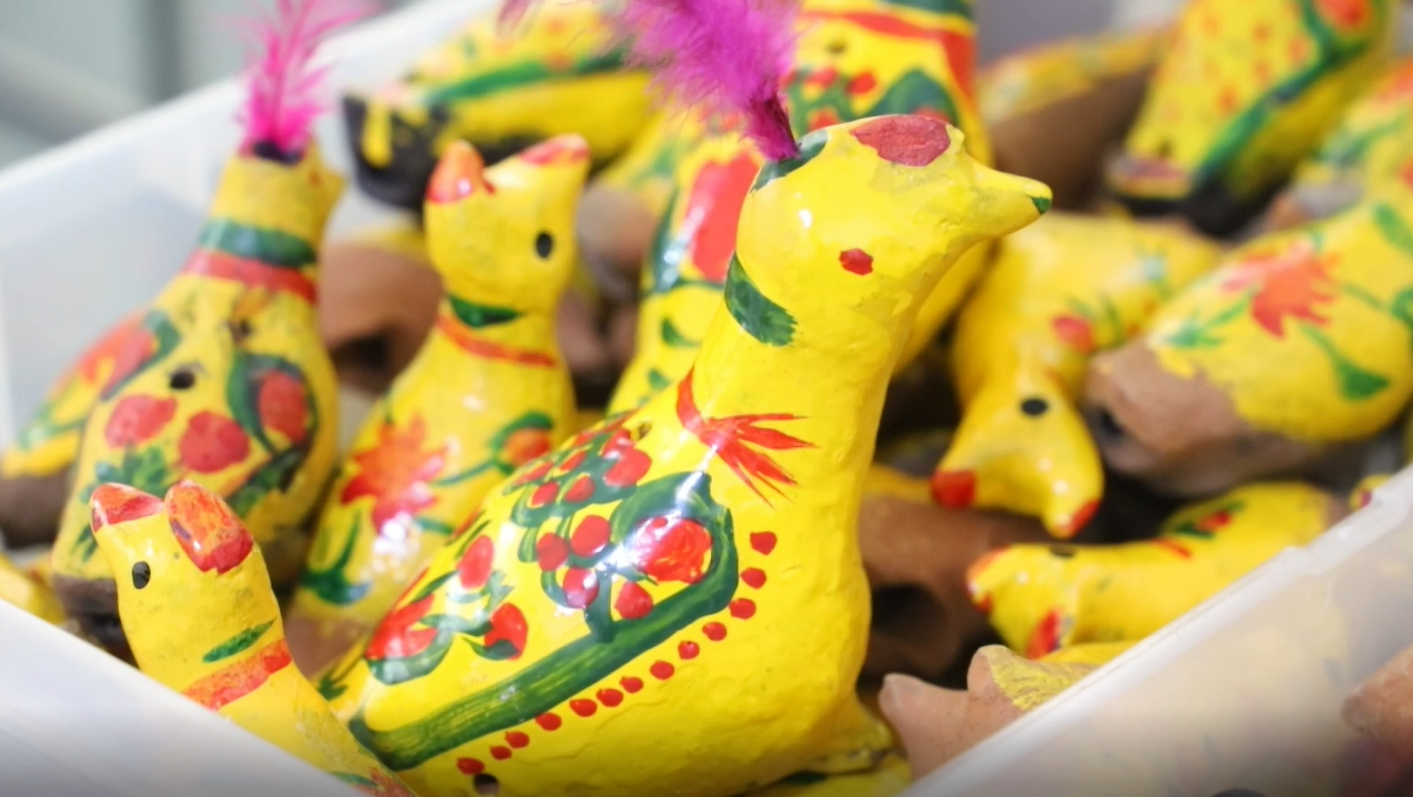
Nowadays, the pottery whistles tied with threads of five colors are not popular any more but the ox head-shaped ones and those with dual sound-making holes are still favored by local people.
Similar to other folk arts in Shandong, color of clay whistles made in Chuzhuang is characterized by brightness, clarity and elegance. By combining bright colors such as magenta, pink green, brownish yellow, sapphire blue and eggplant purple with black, the originally completely different colors become harmonious.
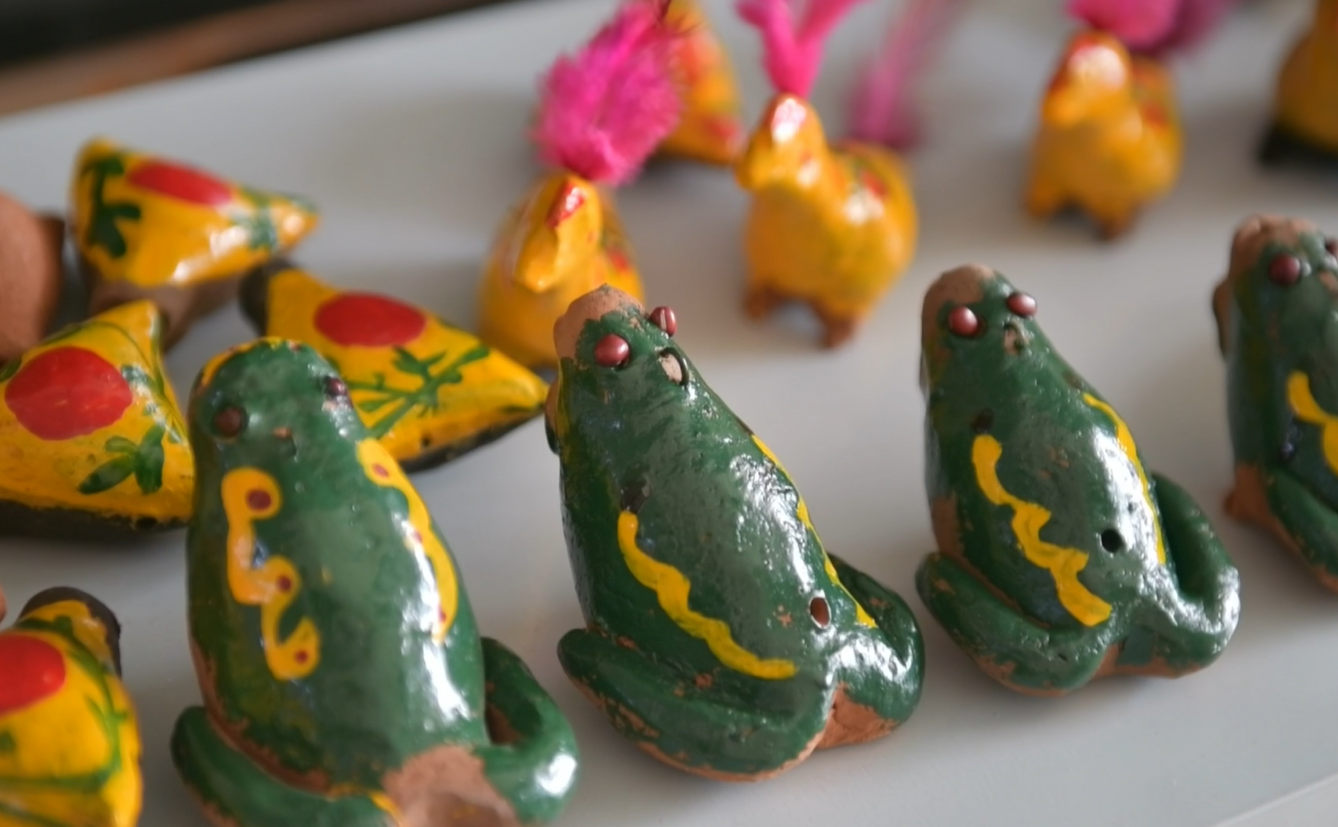
Generally, there are two types of clay whistles in Yimeng area of Shandong Province, the character-shaped ones and animal-shaped ones. For the former, three-dimensional carving is the main technique used and childish eyes, noses and mouths are carved to make the whistles more interesting and attractive. For the latter such a rooster clay whistle, claws are usually eliminated to highlight the spirited posture of roosters together with exaggerated necks and heads.
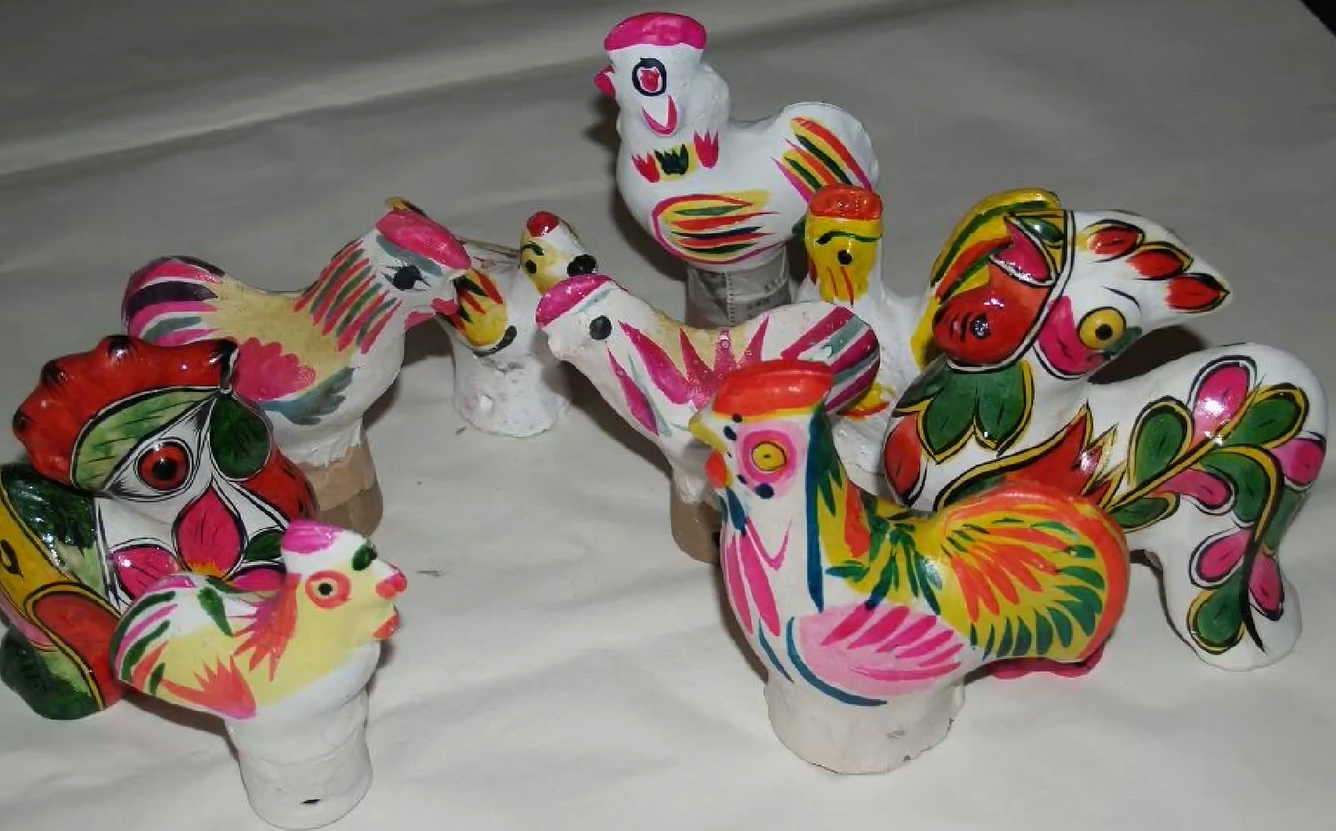
Collected by many national museums and experts around the world, classic clay whistles from Chuzhuang village also won many national awards in China and are are deemed as one of the important platforms for cultural exchange between China and foreign countries.
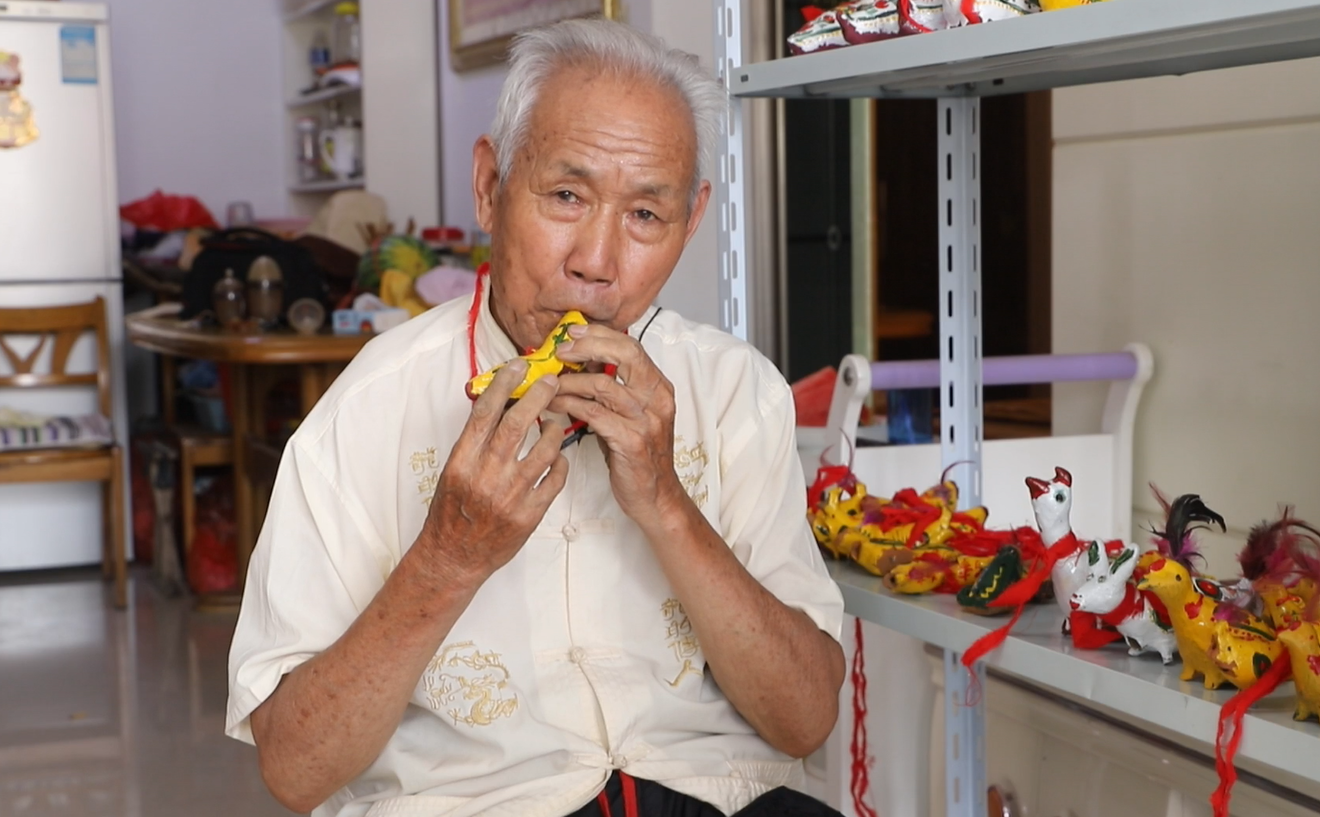
(Edited by Duan Jing with Xinhua Silk Road, duanjing@xinhua.org)




 A single purchase
A single purchase








